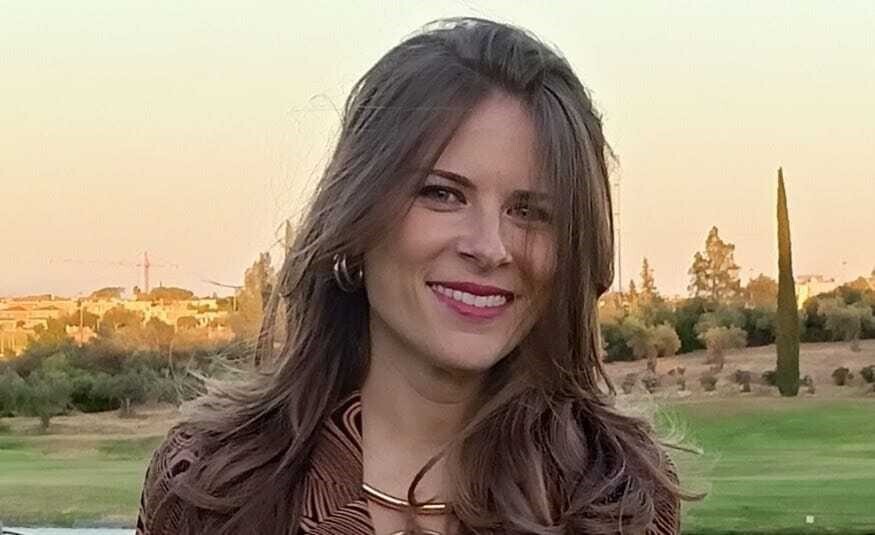Estás leyendo
Organising an event in Fibes: “Everything that is done in our house feels like ours”
Compartir

We spoke to Laura Rubiales, head of the Production Office of Seville City Office and the Palacio de exposiciones y Congresos de Sevilla, about the work she and her team do behind the scenes to ensure that the events held at Fibes are a success.

Two stories can always be told about an event. There is a very obvious story, that of what you see: the volume of attendees, the decoration of the space, the stands, the talks… But there is also a second story that can go unnoticed, and yet it is as or even more important than the first. We are referring to what happens before, during and after the event behind the scenes.
That the events held at Fibes are possible depends on a team of eleven people led by Laura Rubiales, head of the Production Office of the Palacio de Congresos. They are the ones in charge of turning into tangible reality the dreams and ideas of professionals and organisations that come to Seville looking for a place to hold their next congress, fair, concert or cultural event. So today we sneak into their office to find out what motivates them, what their work is and what challenges and satisfactions they face in their day-to-day work.
Question: Laura, for someone who has never worked with you before, what exactly does the Fibes Events Production team do?
Laura Rubiales: The Production team is the link between the person who wants to organise an event at Fibes, the client, and the final suppliers: those who are going to take care of the signage, lighting, electricity, carpentry, modular stands, carpeting… As we also have our own events, we don’t always work with external clients, but with colleagues from Sevilla City Office. But that’s the important thing: we are the bridge between the person who has the idea and the person who executes it.
Internally, we structure our work by events, so each member of the team is responsible for an event. So we all do similar tasks, but for different events. Now, for example, we have finished the World Football Summit and two colleagues have led this project and have been in charge of dealing with clients and suppliers. Our day-to-day work is therefore about talking to the client to understand their idea, and helping them to land it. We have the knowledge of the space and the experience of other previous events and, with that, we advise the client on the set-up – what looks best, what makes an event look better… -. Once this is approved by the client, we pass it on to the suppliers, ask them for a quote and approve it with the client. And on the assembly days, we coordinate with the suppliers their arrival and departure times, the unloading of materials and the rest of the tasks so that the assembly flows smoothly.
Q: This means that all the members of the team have very diverse knowledge and skills, but what would you say are the key skills for working in event production?
L.R.: It is essential to know how to listen to the client – what they want to do, how they want to do it, what their brand is, what they want to transmit at the event – and to empathise with them, and also a lot of desire, a lot of work capacity.
In terms of knowledge, not everyone on the team has the same knowledge. That’s why it’s also my job to see what strengths each person has and to assign the most appropriate person from the team to each event. For example, if an event has a lot of audiovisuals and one person on my team is very good at it, I pass it on to that person. And then we have our suppliers. We are not experts in everything, but we work closely with our suppliers, who advise us on aspects such as assembly, structures, signage or audiovisuals.
Q: Let’s imagine we have someone reading this and they have decided to organise an event at Fibes, where should they start?
LR: The first thing I would do would be to sit down with someone from the Fibes team, because, in the end, we can advise them on many aspects to shape the event together. There are people who arrive with a very clear and very closed idea and maybe that idea doesn’t work for this space. Therefore, what I always propose is to tell me your idea, tell me what you want to do and, with that, our team will help you to get the greatest possible profitability and visibility out of your idea.
In the end, we know the spaces, we know the natural flow of people at events – where people stop, where they don’t stop, so it’s important to make that tandem: the client brings knowledge of his sector, so if he tells us what he wants to achieve with his event, we can help him get the most out of it.
Here we are used to that and, in fact, we are grateful for it, because, although the event is not 100% ours, everything that is done in our house feels like ours.
Q.: Because sometimes it may seem that, due to its size, Fibes is only for a few. Do you have to have a big event in mind to come to the Palacio de Congresos de Sevilla?
L.R.: Fibes is not for the few. It has many good things, but one of them is that we have versatile spaces that you can play with: we can do anything from the biggest to the smallest event; it doesn’t have to be just for big ideas. And within our work there is also the advice we can offer. It may happen that someone comes to us with an event and we realise that Fibes is not the most appropriate venue, in terms of theme or volume, but, as Turismo de Sevilla, we can recommend other venues in the city. In the end, we want it to be known that Fibes is open to everyone and that we have a team at your disposal. We bring enthusiasm, enthusiasm, empathy and trust, which I think are key to this work.
Q: Because I understand that, although each event is different, are there common challenges or important aspects that always require special attention?
L.R.: Indeed, each event is different and has its own needs, but it is also true that, in the end, clients trust that you, who are renting a space, are guaranteeing them that their event will be visited, that it will be seen, that it will have repercussions, and here there is an issue that I insist on a lot, which is that of flows.
When you have a very large exhibition area, let’s say a 7,000 square metre pavilion, if you don’t have a focal point at the end of the exhibition area, people disperse and there may be areas where nobody passes. That’s why you have to have either a small conference room or a bar or some other focal point at the back. You have to establish landmarks throughout the space, such as small exhibitions, or make sure that the mid-morning coffee is given at a specific point in the space, so that people circulate around the stands, are comfortable and there are organic paths.
Q.: What is, then, the most important thing in the process of organising a big event in the Space-Client relationship?
L.R.: I think trust is fundamental, that a person who comes to this space trusts the team. I understand that when it’s someone who doesn’t know you, who hasn’t worked with you before, it’s complicated, but we are dedicated to this and this is what we know how to do. In the end, when we start working with a client, we are one; we experience the event as our own. Therefore, there has to be trust, transparency, fluidity, good communication.
Q.: You work in a sector that is constantly evolving, what trends are now shaping the work of the Event Production area?
L.R.: Sustainability and digitalisation are the two big premises we are working towards. In the short term, we are focusing on aspects such as generating as little waste as possible and managing the waste that is inevitably produced. We are working a lot on recycling and, for example, in relation to the materials we use for the set-ups, we are starting to work on the use of recyclable carpets, which have another life after the event. We also use screens instead of traditional signage and signage elements, which, once the event is over, are thrown away; surplus food is taken to the Food Bank or to an organisation that collects it so that it can be used. This is something that the clients themselves ask for. There are clients who, if you don’t have this, they don’t contract the event with you. And there are also regulations that we have to respect. There are many aspects to take into account, but we continue to move forward steadily in order to be more and more sustainable.
Q.: Taking into account everything you say, how do you measure the success of an event?
L.R.: At the production level, once the event is set up, we assess that the set-up times have been respected, that each supplier has complied with their day and their schedule, that there have been no incidents or that the set-up has turned out well.
But, at a general level, what defines the success of an event is customer satisfaction and that is marked by attendance at the event and the profitability they have obtained, but also by the attention they have received, by how easy it is to We have set it up for assembly and disassembly. In many cases we can say “don’t worry, we’ll take care of it”, because we have the equipment and we can provide that service and we try to make the experience as easy as possible for the client.
That the client leaves happy or that he tells you that he has worked well in Seville, with the team, that he has been comfortable, that he has been calm, is the most rewarding part of my job. And the same with the suppliers. If the rest is happy, you are happy.
*****
If you are thinking of organizing your next event in Seville, the Fibes team is at your disposal. Write to us at info@sevillacityoffice.es and make your first appointment with us.

This website uses cookies so that we can provide you with the best user experience possible. Cookie information is stored in your browser and performs functions such as recognising you when you return to our website and helping our team to understand which sections of the website you find most interesting and useful.
Strictly Necessary Cookie should be enabled at all times so that we can save your preferences for cookie settings.
If you disable this cookie, we will not be able to save your preferences. This means that every time you visit this website you will need to enable or disable cookies again.
This website uses Google Analytics to collect anonymous information such as the number of visitors to the site, and the most popular pages.
Keeping this cookie enabled helps us to improve our website.
Please enable Strictly Necessary Cookies first so that we can save your preferences!